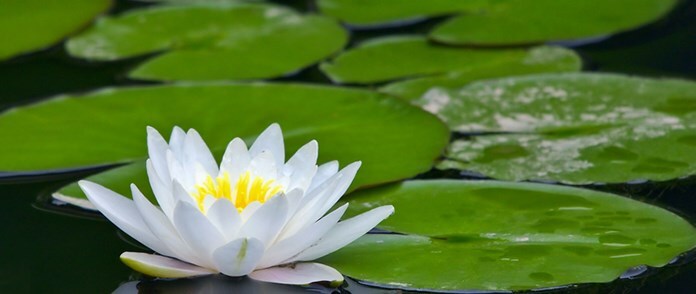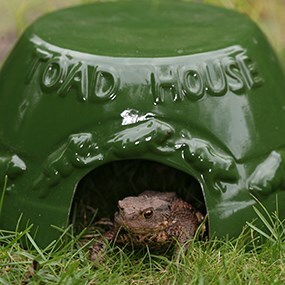Creating a watery wildlife haven

One of the best ways of attracting wildlife to gardens is to create a wildlife pond stocked with plants for wildlife. Not only will this help native animal conservation, but it would be a giant step towards creating a wildlife-friendly garden.
You can create a haven for frogs, newts and other pond creatures as well as dragonflies, birds and butterflies by making a wildlife pond. It does not have to be a large feature, the important thing is to include a range of different habitats to attract the greatest variety of wildlife to visit and set up home in your garden. In a small garden, an old stone sink or large bucket sunk rim-deep into the soil could become an attractive watering hole – especially if surrounded by foliage plants that provide natural cover. It may even become watery retreat for pest-eating frogs that will help keep the slug population in check. However, where there is space available, you will get a far greater variety of wild creatures using your garden by adding a pond specifically designed to meet their needs.


Making a wildlife pond
- Help visualise the outline of the pond using a hosepipe and then mark the ground with a trickle of dry sand.
- Excavate the soil to the required depth, so that the centre of the pond is at least 60cm deep. This will provide a sufficiently large body of water to limit temperature fluctuations and prevent the water freezing solid in winter. The depth of the hole should also be adjusted to accommodate the thickness of the liner and padding you are using.
- If you want to grow marginal aquatic plants, create a level self about 20-25cm deep around the edge, but include a gently sloping gradient on at least one side to provide easy access for wildlife.
- Once excavated, pick over the concave surface of the hole to remove any stones and other debris that might puncture the liner.
- The line the hole with a piece of old carpet, underlay or 2cm-deep layer of sand to help protect the liner. Then position the butyl liner making sure it overlaps on all sides.
- Slowly fill the pond with water, carefully easing the liner and adjusting the folds so that they lie as flat as possible.
- Trim off any excess liner and hide the exposed edge using soil, turf, piles of stones or logs to create a naturally appealing edge.
- Create a beach on gentle gradients by adding a layer of pebbles that will help disguise the liner.
- Leave for a week to settle and then plant up you pond.
Stocking with life
You do not really need to stock a wildlife pond, since creatures will naturally seek it out. You can speed the process up, however, by adding a bucket of sludge dredged from the bottom of a friend or neighbour’s established wildlife pond.
